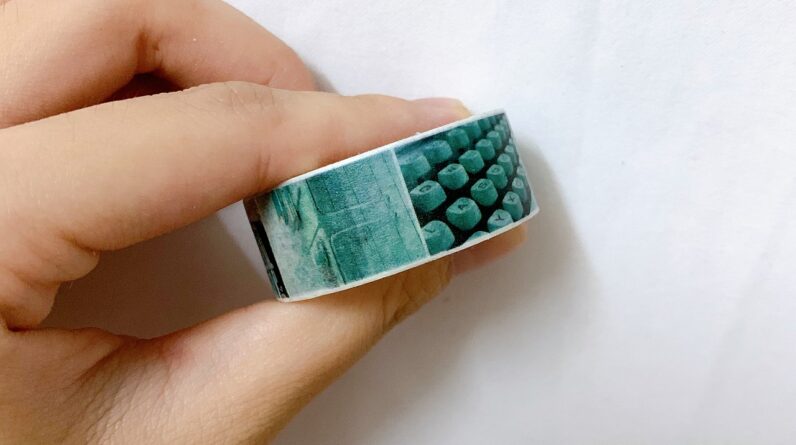
Welcome to “Knitting 101: Essential Techniques for Newbies,” where we embark on a delightful journey into the cozy world of knitting. Together, we’ll unravel the basics, from casting on stitches to mastering the knit and purl techniques, unlocking a new realm of creative possibilities. We’ll guide each other through this relaxing and rewarding pastime, stitch by stitch, ensuring that by the end of our journey, we all feel confident and inspired to craft beautiful, handmade treasures. Let’s warm up our knitting needles and share in the joy of creating something truly special with our own hands.
Have you ever found a gorgeous handmade sweater and thought to yourself, “I wish I could create something like that”? Well, you’re in luck because knitting is a skill anyone can learn with a little bit of practice and patience. Today, we’re diving into “Knitting 101: Essential Techniques for Newbies,” and by the end of this article, you’ll be well-equipped to start your first knitting project. With our friendly guidance and step-by-step instructions, you’ll be knitting like a pro in no time!

What You Need to Get Started
Before we dive into techniques, let’s talk about what you need to start your knitting journey. Gathering the right tools and materials is the first step to success.
Essential Supplies
1. Needles:
Knitting needles come in various sizes and materials. For beginners, we recommend starting with medium-sized needles (US size 7-9, 4.5-5.5 mm) made of bamboo or wood as they provide a better grip.
2. Yarn:
There are different types of yarn, but medium-weight yarn (also known as worsted yarn) is perfect for newbies. It’s easy to find and work with, making it ideal for practice.
3. Scissors:
A small, sharp pair of scissors is essential for cutting yarn cleanly.
4. Stitch Markers:
Stitch markers help keep track of your stitches and patterns. These are especially useful for larger projects.
5. Tapestry Needle:
A tapestry needle (or yarn needle) is used for weaving in the ends of the yarn once your project is complete.
Optional But Helpful Tools
1. Row Counter:
This helps keep track of your rows, particularly when working on complex patterns.
2. Measuring Tape:
For ensuring your project is the right size.
3. Needle Gauge:
Useful for checking the size of your knitting needles (as sizes can sometimes rub off with use).
Understanding Yarn and Needle Basics
Before we get into the actual techniques, it’s important to understand the relationship between yarn and needles, as well as some basic terminology.
Yarn Weight and Needle Size
Yarn comes in different weights, and each weight pairs best with a specific needle size. Here’s a handy table for reference:
| Yarn Weight | Needle Size (US) | Needle Size (Metric) |
|---|---|---|
| Lace | 000-1 | 1.5-2.25 mm |
| Fingering | 1-3 | 2.25-3.25 mm |
| Sport | 3-5 | 3.25-3.75 mm |
| DK | 5-7 | 3.75-4.5 mm |
| Worsted | 7-9 | 4.5-5.5 mm |
| Bulky | 9-11 | 5.5-8 mm |
| Super Bulky | 11+ | 8 mm+ |
Basic Knitting Terminology
1. Cast On:
The technique to start your project and get the yarn onto your needles.
2. Knit Stitch (K):
One of the two basic stitches used in knitting.
3. Purl Stitch (P):
The second basic stitch used in knitting.
4. Bind Off (Cast Off):
The method used to finish your project and remove it from the needles.
Step-by-Step Techniques
Now that we have our supplies and understand the basics, let’s walk through the essential techniques every newbie should know.
Casting On
To start any knitting project, you need to cast on stitches. There are several methods, but we’ll focus on the most beginner-friendly one— the Long Tail Cast On.
-
Measure Your Tail:
Leave a long tail of yarn, about three times the width of your project. -
Make a Slip Knot:
Loop the yarn around your fingers and pull the tail through the loop to make a knot. -
Place on Needle:
Slide this knot onto your needle and tighten, but not too tightly. -
Hold Yarn:
Hold the needle with the slip knot in your right hand, and position the yarn with the tail over your thumb and working yarn over your index finger. -
Create a Stitch:
With the needle, go under the yarn on your thumb, grab the yarn from your index finger, and pull it through the loop on your thumb. -
Tighten Stitch:
Tighten the yarn to make the first stitch. Repeat the process until you have the number of stitches needed.
The Knit Stitch
The knit stitch is the foundation of most knitting patterns. Here’s how you do it:
-
Hold Needles:
Hold the needle with the cast-on stitches in your left hand and the empty needle in your right. -
Insert Needle:
Insert the right needle into the first stitch from front to back. -
Wrap Yarn:
Wrap the working yarn (connected to the yarn ball) around the right needle. -
Pull Yarn Through:
Pull the yarn through the stitch on the left needle to create a new stitch. -
Slip Stitch Off:
Slip the old stitch off the left needle. You now have one knit stitch on your right needle.
Repeat these steps until you reach the end of the row.
The Purl Stitch
The purl stitch is the knit stitch’s counterpart and is used to create different textures and patterns.
-
Hold Needles:
Hold the needle with the stitches in your left hand and the empty needle in your right. -
Insert Needle:
Insert the right needle into the first stitch from back to front. -
Wrap Yarn:
Wrap the working yarn around the right needle. -
Pull Yarn Through:
Pull the yarn through the stitch on the left needle. -
Slip Stitch Off:
Slip the old stitch off the left needle.
Use this technique across the row.
Binding Off
Once you’ve completed your project, you’ll need to bind off to secure the stitches.
-
Knit Two Stitches:
Knit the first two stitches of the row. -
Lift Stitch Over:
Use the left needle to lift the first stitch over the second stitch and off the needle. -
Repeat:
Knit one more stitch, lift the previous stitch over the new stitch and off the needle. Continue this until you have one stitch left. -
Cut Yarn:
Cut the yarn, and pull it through the last loop to secure.
Additional Techniques and Tips
Now that you know the basic stitches, let’s explore some additional techniques that will expand your knitting skills.
Increasing Stitches
Increasing stitches adds extra stitches to your row, allowing your project to grow in size. Here are a couple of common methods:
1. Knit Front and Back (Kfb):
- Knit into the front of the stitch but don’t slip it off the needle.
- Knit into the back of the same stitch, then slip it off the needle. You now have two stitches where there was one.
2. Make One (M1):
- Use the tip of the left needle to pick up the bar between two stitches.
- Knit into this bar, twisting it to create a new stitch.
Decreasing Stitches
Decreasing stitches allows your project to taper or shape.
1. Knit Two Together (K2tog):
- Knit two stitches together as though they are one stitch. This decreases the stitch count by one.
2. Slip, Slip, Knit (SSK):
- Slip the first stitch knitwise, then slip the second stitch knitwise.
- Insert the left needle into the front of these two stitches and knit them together. This creates a left-leaning decrease.
Fixing Common Mistakes
Mistakes happen, but knowing how to fix them is crucial:
1. Dropped Stitches:
- Use a crochet hook to pick up the dropped stitch and pull it through the loops until it reaches the working row.
2. Incorrect Stitches:
- Look for “telltale signs” such as uneven rows. Use your left needle to unravel to the mistake and redo.
3. Tight or Loose Stitches:
- Practice consistent tension. A relaxed grip usually helps.

Practice Patterns for Beginners
Here are a couple of simple patterns to practice the techniques you’ve learned.
Simple Scarf
Materials:
- Worsted weight yarn
- Size 8 needles
Instructions:
-
Cast On:
- Cast on 30 stitches using Long Tail Cast On.
-
Knit Each Row:
- Knit every row to create a garter stitch pattern.
-
Continue:
- Continue knitting until your scarf reaches the desired length.
-
Bind Off:
- Bind off all stitches.
-
Finishing:
- Weave in the yarn ends with a tapestry needle.
Easy Dishcloth
Materials:
- Cotton yarn (worsted weight)
- Size 7 needles
Instructions:
-
Cast On:
- Cast on 4 stitches using Long Tail Cast On.
-
Pattern:
- Row 1: Knit.
- Row 2: Knit two, yarn over, knit to the end.
- Repeat Row 2 until you have 40 stitches.
-
Decrease:
- Row 1: Knit one, knit two together, yarn over, knit two together, knit to the end.
- Repeat until you have 4 stitches remaining.
-
Bind Off:
- Bind off all stitches.
-
Finishing:
- Weave in the yarn ends.
Knitting Resources and Communities
As you continue your knitting journey, you might want additional support and inspiration. Here are some resources and communities you can explore.
Online Platforms
1. Ravelry:
An online community with patterns, forums, and groups for every type of knitter.
2. YouTube:
Channels like “VeryPink Knits” and “Knitting Tips by Judy” offer helpful tutorials.
3. Blogs and Websites:
Sites like Purl Soho and KnittingHelp provide free patterns and tips.
Knitting Groups
1. Local Yarn Stores:
Many offer knitting classes and host knitting circles where you can meet fellow knitters.
2. Social Media:
Join Facebook groups or follow knitting hashtags on Instagram to connect with others.
3. Libraries and Community Centers:
Sometimes, these places host crafting events and knitting clubs.

Conclusion
Knitting is a rewarding and relaxing hobby that allows us to create beautiful and functional items. By mastering the essential techniques covered in this article, we’re well on our way to knitting success. Keep practicing, don’t be afraid of making mistakes, and most importantly, enjoy the process. Soon enough, we’ll be knitting lovely pieces that we can be proud of. Happy knitting!







